Student: Sara Isabel Belinha Pereira
Professor:Daniel Pedrosa
Santa Maria de Lamas, 15 December 2017
This report was made with the intention to explain the steps I took while making this photoshop project, part of the school subject ‘Oficina de Multimédia B’.
Before making this report, I made a brief apresentation of my finished project in class. The goal of this project was to make a surreal illustration on the program Photoshop using only pictures taken by us.We were randomly assigned an “Invisible City” from Italio Calvino’s novel “Invisible Cities” – mine was Ercília (in portuguese) or Ersilia (in english). You can find the description I had to use below.
(“In Ersilia, to establish the relationships that sustain the city’s life, the inhabitants stretch strings from the corners of the houses, white or black or gray or black-and-white according to whether they mark a relationdhip of blood, of trade, authority, agency. When the strings become so numerous that you can no longer pass among them, the inhabitants leave: the houses are dismantled; only the strings and their supports remain.
From a mountainside, camping with their household goods, Ersilia’s refugees look at the labyrinth of taut strings and poles that rise in the plain. That is the city of Ersilia still, and they are nothing.
They rebuild Ersilia elsewhere. They weave a similar pattern of strings which they would like to be more complex and at the same time more regular than the other. Then they abandon it and take themselves and their houses still farther away.
Thus, when traveling in the territory of Ersilia, you come upon the ruins of abandoned cities, without the walls which do not last, without the bones of the dead which the wind rolls away: spiderwebs of intricate relationships seeking a form. “)
My illustration focuses on the early stages of the city.
To be able to do this project I had to experiment a lot on this program, since I have never used it before. I ended up not seeing any youtube tutorials and experimenting on the go and when I had questions about something I couldn’t figure out I googled it. It would probaly have been easier to watch a few tutorials at least but I was having to much fun even though I probally didn’t explore the tools the program possessess to their full extent.
Anyways, I started this project by reading the text and doing a sketch of what I wanted to represent.I decided on doing one of the early stages of the city, where the strings weren’t quite so many to warrant a move. I ended up having a lot of freedom on this since the only thing really especified were the strings so I had my fun with the houses.
I took a lot of photos – though many don’t really have a good quality – and these were the ones i ended up using :
The first thing I did after I opened the program was size it to and horizontal format. Then I added the backgroung for my work, a part of a painting i made, though it resized to an even smaller part than it was before.
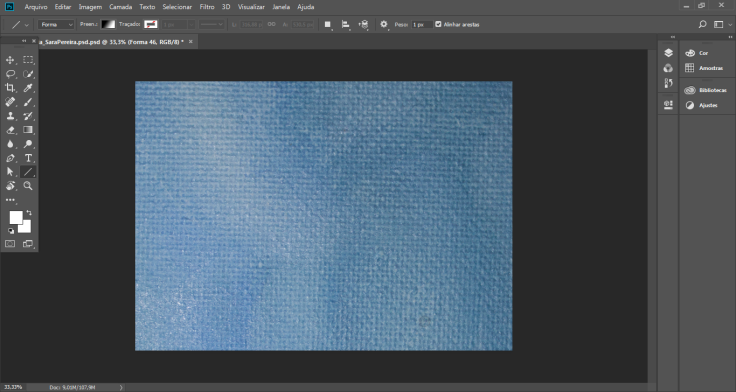
After that I did the main street using a photo of a rug i had at home. To isolate the rug I used the erasor tool ( i did this everytime I wanted to isolate something, I tried other ways but they didn’t work so…).
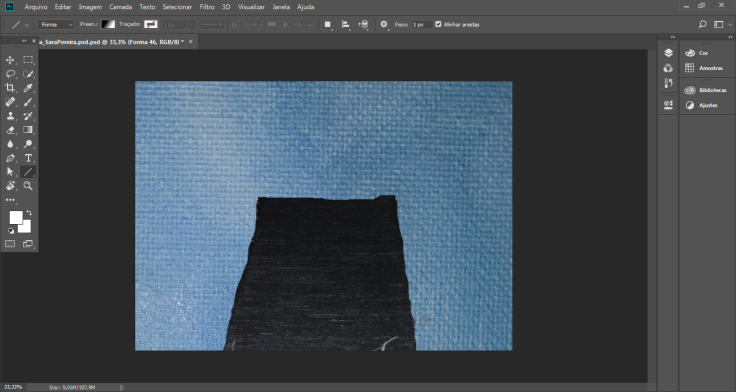
Then to do the side street I copied the image of the rug I isolated, resized it and erased some parts.
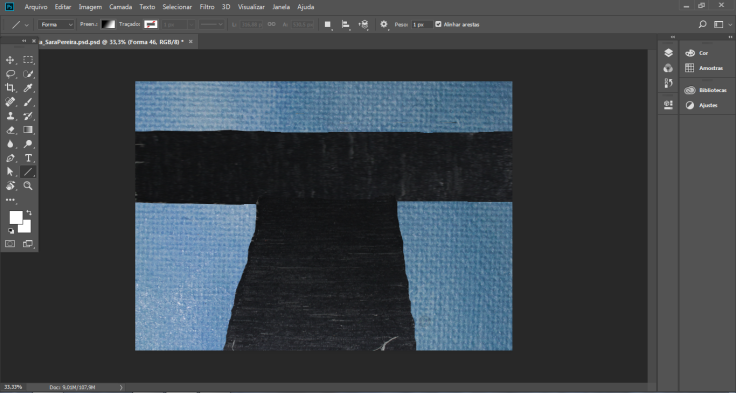
Afterwards, I isolated the tallest wooden block the same way, though I had to do this part several times since things kept going wrong. I messed around a lot with all the tranformation options.
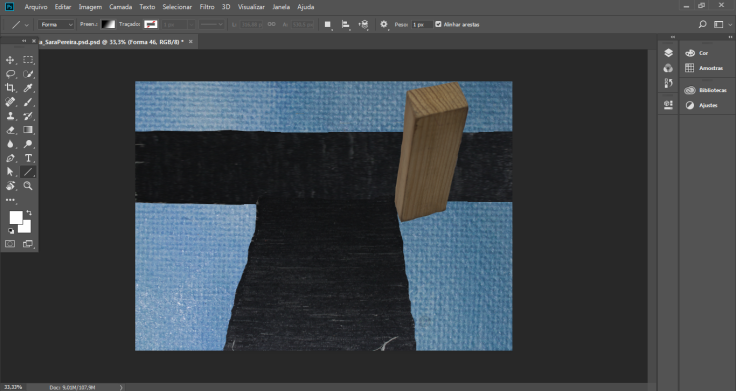
I did the same thing for the smaller block. (At this point in time they didn’t look like the image bellow which was taken after I finished, besides resizing I hadn’t done anything else).
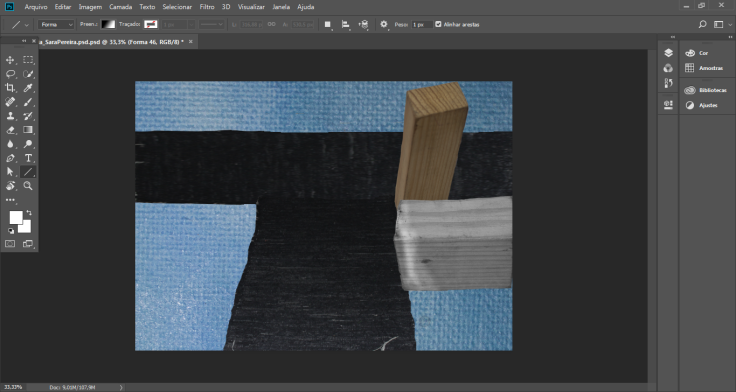
I copied both buildings a few times and decided to mess around with the transformation options, I ended up using the deform option. Since I thought that all of the buildings being the same colour was boring, I tweaked the tones – I also had a lot of fun with this.
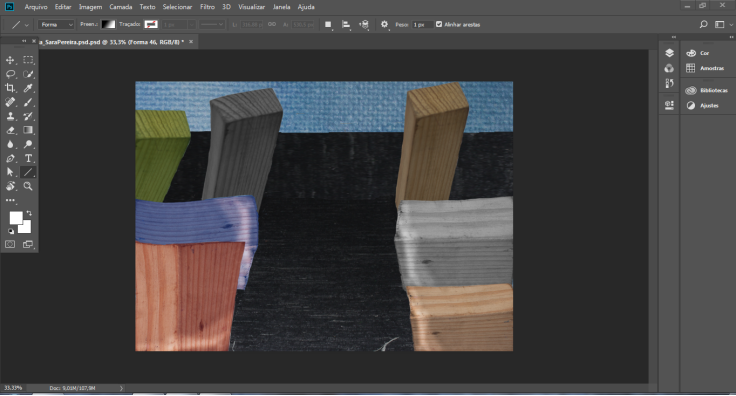
To make the windows I used a photo of my kitchen cabinet , isolated it the same way I isolated the other images, copied it several times and positioned them where I wanted and deformed them to mach their respective building.
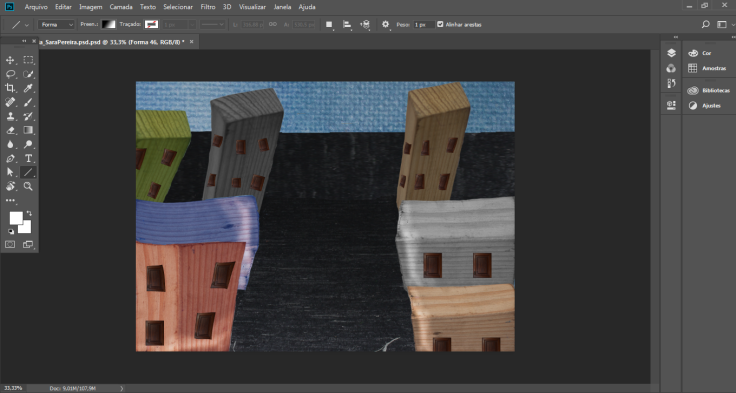
Then, I started adding the white strings using the line tool (though one of them, the uneven one, is a photo).
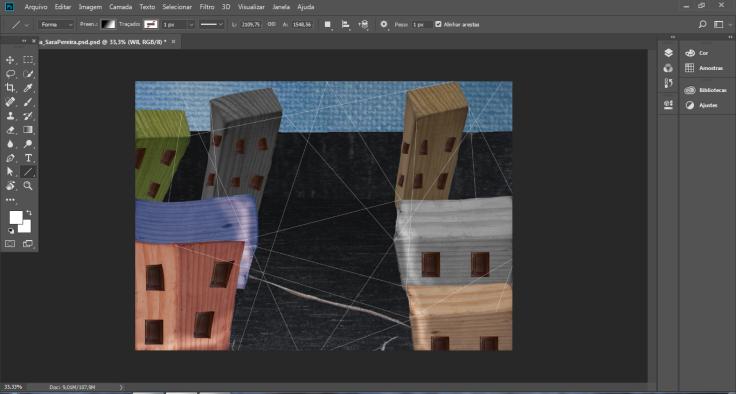
The top of the building seemed empty so I added a ‘support’ since some of said buldings were taller – apartement buildings – though i added it to one story’s too, so the houses could connect to the ones further away.
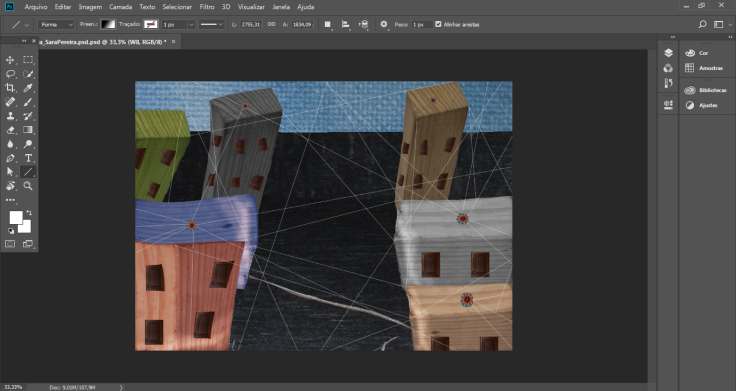
Then i added the grey, black and black and white strings – the two-toned strings were made by clicking on a filling option that had a degrade-.
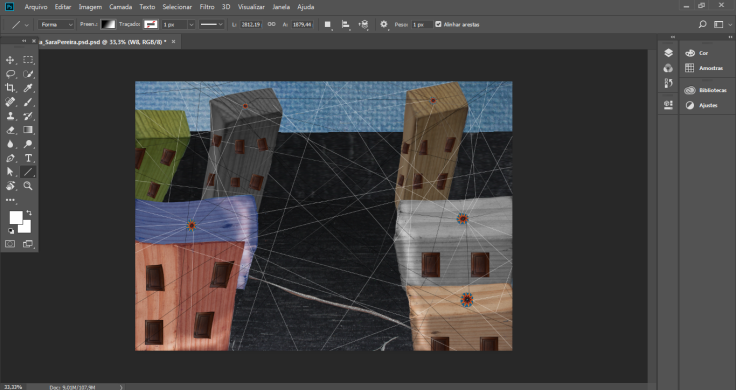
And this is the end result of my project:
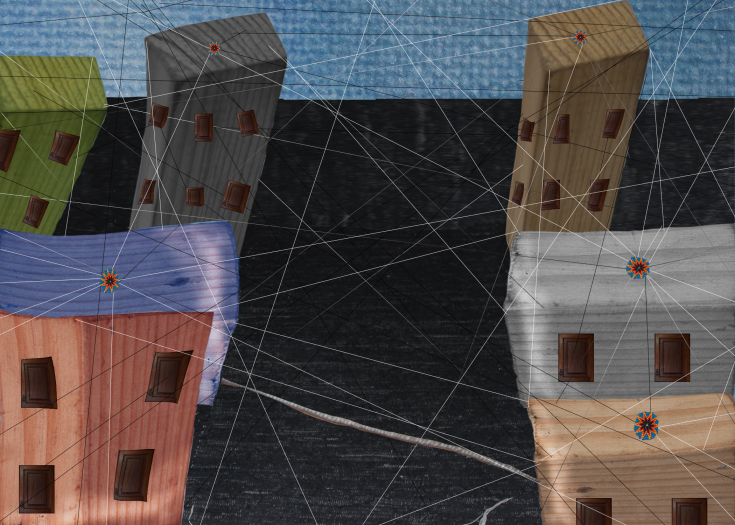
It could be better ,but i’m fairly happy with it. This was a hard project to make since I had no prior photoshop knowledge and the professor was on leave but working with what I had it didn’t turn out that bad. Again, I could have watched tutorials and I was going to, but I kind of lost myself while playing around with the program. I learned about the program because of it too.
If I had to do it now, i probaly would have added some people (represented by dolls, probally) to make it feel more lively but at the time it slipped my mind – probaly because this is one of the cities where the people weren’t made a big deal, or featured a lot.
I learned and had fun, in the end.
See you next time .










































 After working at Today’s Post in King of Prussia, Pennsylvania for two years, he left for India to freelance. It was here that McCurry learned to watch and wait on life. “If you wait,” he realized, “people will forget your camera and the soul will drift up into view.”
After working at Today’s Post in King of Prussia, Pennsylvania for two years, he left for India to freelance. It was here that McCurry learned to watch and wait on life. “If you wait,” he realized, “people will forget your camera and the soul will drift up into view.”


















